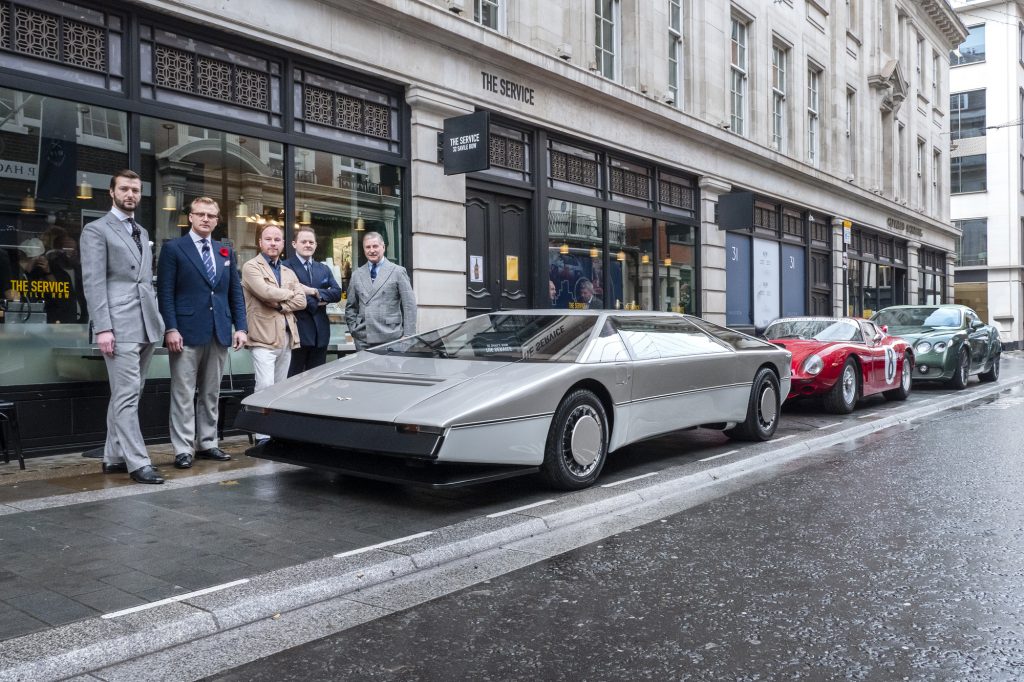ART – A Festival of Light and Stone by Nicolas Moreton
 Nicolas Moreton is one of those truly gifted sculptors who revels in his love of past giants who wielded the chisel, writes Robin Dutt. ‘Making a Mark’ is a fine retrospective show of the creator’s signature style – whether gargantuan figures, cosmic or mythical symbolism, experiments in pure shape – or stone, bleeding halogen light. He began stone carving in 1985 but his output is so prodigious and ambitious that he made up for what anyone might call ‘other pursuits’. Purposefully sensual and sexual in content, these large male and female forms are suffused with a brooding, primeval energy and when, in some rarer cases he utilizes silk, paint, gold leaf, metal or Cedar Cones, he explores what is possible when conveying expression in unusual ways. The silk and stone are immediately evocative, for instance helped by the vividness of the chosen blood red hue of the silk. This piece is purposefully called, ‘Transition’.
Nicolas Moreton is one of those truly gifted sculptors who revels in his love of past giants who wielded the chisel, writes Robin Dutt. ‘Making a Mark’ is a fine retrospective show of the creator’s signature style – whether gargantuan figures, cosmic or mythical symbolism, experiments in pure shape – or stone, bleeding halogen light. He began stone carving in 1985 but his output is so prodigious and ambitious that he made up for what anyone might call ‘other pursuits’. Purposefully sensual and sexual in content, these large male and female forms are suffused with a brooding, primeval energy and when, in some rarer cases he utilizes silk, paint, gold leaf, metal or Cedar Cones, he explores what is possible when conveying expression in unusual ways. The silk and stone are immediately evocative, for instance helped by the vividness of the chosen blood red hue of the silk. This piece is purposefully called, ‘Transition’.
The temptation might be to recall the magnificent work of such masters as Epstein or Moore and Moreton, pictured above left, would probably not disagree but he has certainly made a particular brand of sense, sensuality and sexuality his own. Many times, he presents his figures without faces – or if they have ‘faces’ then these might be embellished instead of detailed with eyes, nose, mouth or in one case, ‘Sunflowers (Man and Boy)’ he presents the reality of a guardian generation, the father with his son – both figures sporting the dense seed network of a rough, circular sunflower bloom.
This may not be the weather to want to spend too long outside, instead of dreaming of roasting your nuts by an open fire, but that is exactly what Moreton wants to encourage. The show is at New College, The Cloisters and Ante-chapel where so much of the work has been set in the context of the natural world. It is a harmonic union for the very material he uses can trace its origin to beneath the earth or as outcrops from marble cliffs. These materials such as Kilkenny Fossil Limestone, Ancaster Weatherbed Limestone, Clipsham Blue Limestone, Corremie Pink Granite or Portuguese Marble all have their distinct characters and qualities and Moreton is intimate with all their personalities.What is right for one construct is surely not so suitable for another. He respects and adores what nature has given him to play with but as a very contemporary worker in stone, he has some very contemporary ideas of production, too. As Miles Young, Warden, New College, Oxford points out – lest we do not know or are apt to forget, –
…’Moreton is no slave to tradition. He is a consummate craftsman
with a highly developed skill in direct carving into the stone, but he uses
tungsten carbide reinforced tips for his chisels and polyurethane for
his mallets which gives him the advantage over Michelangelo, and his
diamond sponges enable him to polish the surface of his stone carvings
to a brilliance which Henry Moore would have envied’.
Moreton attracted the attention of such enthusiasts as jazz singer George Melly and strident, brilliant critic, Brian Sewell who both had pieces in their private collections and Lord Archer is also a fan.
And showing his eager hand when it comes to experimentation in this type of sculptural work, he presents in this latest show, a selection of his tactile, almost hypnotic and atmospheric pieces such as ‘Chrysalis’, ‘O Joyous Light’, ‘In the Beginning’ and ‘Catherine Wheel’ where he makes use of lights, whether LED or Halogen. These might certainly take the chill off a winter visit to the show. The latter in particular adds a surprising element to his work where the light appears to mimic trapped molten lava. Or in the case of, specifically, ‘In the Beginning’ the structure is flagrantly sexual in its shaping and meaning, the crack of light, glowing within as an invitation and a reminder from where all life starts. It might of course, be read as a simple shape, an element of space, a potent decoration from a science fiction mansion and more – but knowing Moreton’s touch, the link with creation is too strong to ignore. It looks like an egg cracking open, the beginning of a stellar journey.
And it is back to the fecundity of nature which gives life when Moreton himself says of ‘Catching Nature’s Gift’ (a nude female with hands raised)
‘She sits, waiting, expectant. Her hands are raised ready to
catch the fertile waters of life from the sky. When the rains come, they
cascade down her fertile core and then into the earth beneath her. Her
stone pedestal represents the earth and the rivers of our world’.
Making a Mark – A Retrospective Exhibition of Sculpture by Nicolas Moreton is at New College and Ante-chapel, New College Lane, Oxford, OX1 3BN
ART - A Festival of Light and




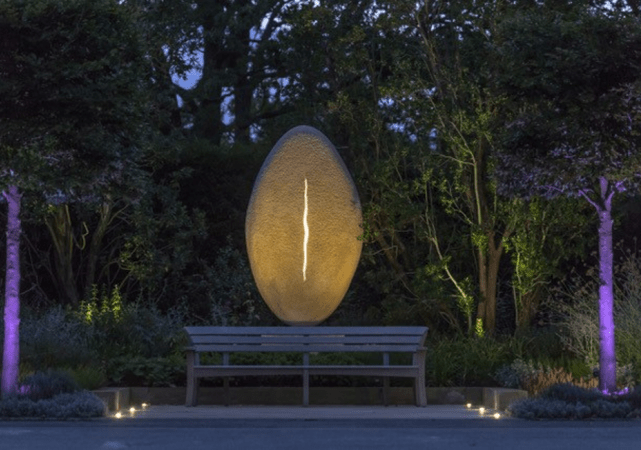

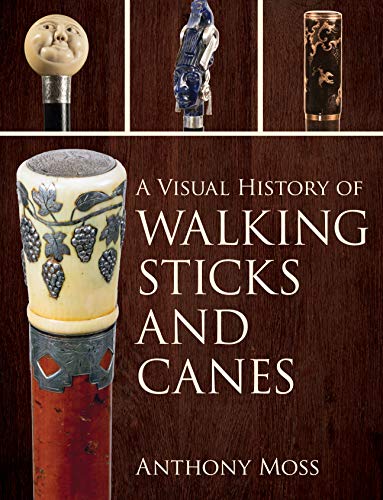
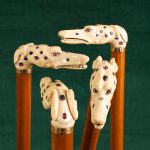 Some only three hundred years ago, gentlemen wore swords at their hips as marques of distinction and choice (not just for street fighting or to defend honour) and of course, were representative of their spending ability. In many ways, the walking stick replaced the sword just as in the 20th century the walking cane would be superseded by the umbrella – a device that provides two functions yet at a push (quite literally sometimes) could still be deemed as a weapon of first defence. Umbrella point and eyes or privates of attacking thief? No contest if it is in the right hands – like someone with some fencing experience. And indeed, the umbrella itself – a relative of the stick – has now been replaced by and large…by nothing. Sartorial justice.
Some only three hundred years ago, gentlemen wore swords at their hips as marques of distinction and choice (not just for street fighting or to defend honour) and of course, were representative of their spending ability. In many ways, the walking stick replaced the sword just as in the 20th century the walking cane would be superseded by the umbrella – a device that provides two functions yet at a push (quite literally sometimes) could still be deemed as a weapon of first defence. Umbrella point and eyes or privates of attacking thief? No contest if it is in the right hands – like someone with some fencing experience. And indeed, the umbrella itself – a relative of the stick – has now been replaced by and large…by nothing. Sartorial justice. In his very entertaining tome, ‘A Visual History of Walking Sticks and Canes’, Anthony Moss, pictured left, also an esteemed collector of first editions, fine furniture and unusual stationery items, takes us on a fascinating historical journey of this one-time sartorial and purely functional implement which only a hundred years or so ago was a daily feature not to say, a must. The functional stick or cane is one thing, such as a sturdy walking device or something with a curved end held in the hand of a shepherd boy, so to speak and Moss covers some of these examples. But what is most fascinating is the sheer indulgence represented by sticks and canes which were the ‘pointe finale’ when it came to fine dressing for a gentleman or a lady. They really were the finishing touch and betrayed much detail about the wearer (the correct term – for you don’t carry a cane) and also of the quality of the usually commissioned item. In the final analysis, an elegant cane was not simply for the joy of the wearer it was for the admiration of the discerning. And the covetous.
In his very entertaining tome, ‘A Visual History of Walking Sticks and Canes’, Anthony Moss, pictured left, also an esteemed collector of first editions, fine furniture and unusual stationery items, takes us on a fascinating historical journey of this one-time sartorial and purely functional implement which only a hundred years or so ago was a daily feature not to say, a must. The functional stick or cane is one thing, such as a sturdy walking device or something with a curved end held in the hand of a shepherd boy, so to speak and Moss covers some of these examples. But what is most fascinating is the sheer indulgence represented by sticks and canes which were the ‘pointe finale’ when it came to fine dressing for a gentleman or a lady. They really were the finishing touch and betrayed much detail about the wearer (the correct term – for you don’t carry a cane) and also of the quality of the usually commissioned item. In the final analysis, an elegant cane was not simply for the joy of the wearer it was for the admiration of the discerning. And the covetous.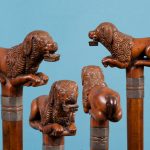 Moss’ knowledge is devastatingly wide – explosively so – and his passion unbridled. He is probably one of the most important cane collectors in the world and this book surely represents his life’s real work. And it all started when his delightful poetess wife, Deanna presented him with a couple of sticks as a present one day so long ago in their 56-year marriage. Did she know then what she was doing? Probably. For the A&D Collection is one of the finest to be enjoyed and within the covers of this book can be appreciated by all, enthusiasts and the curious. The trouble with curiosity is that it can sometimes lead to collecting. Ask Mr Moss.
Moss’ knowledge is devastatingly wide – explosively so – and his passion unbridled. He is probably one of the most important cane collectors in the world and this book surely represents his life’s real work. And it all started when his delightful poetess wife, Deanna presented him with a couple of sticks as a present one day so long ago in their 56-year marriage. Did she know then what she was doing? Probably. For the A&D Collection is one of the finest to be enjoyed and within the covers of this book can be appreciated by all, enthusiasts and the curious. The trouble with curiosity is that it can sometimes lead to collecting. Ask Mr Moss.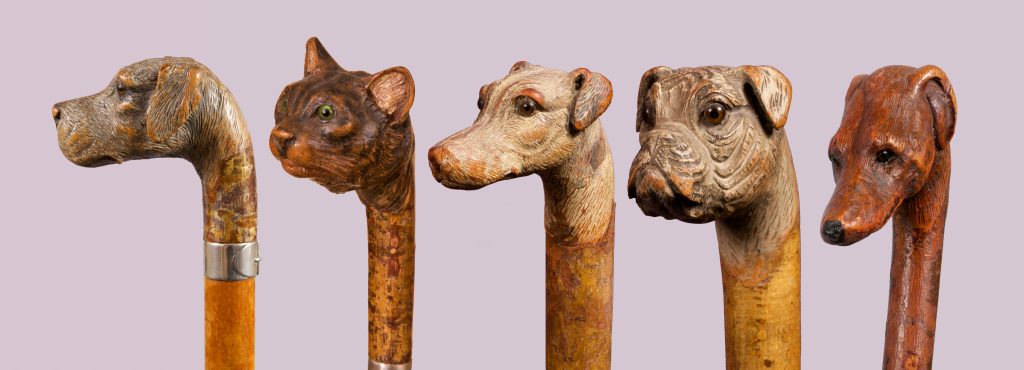
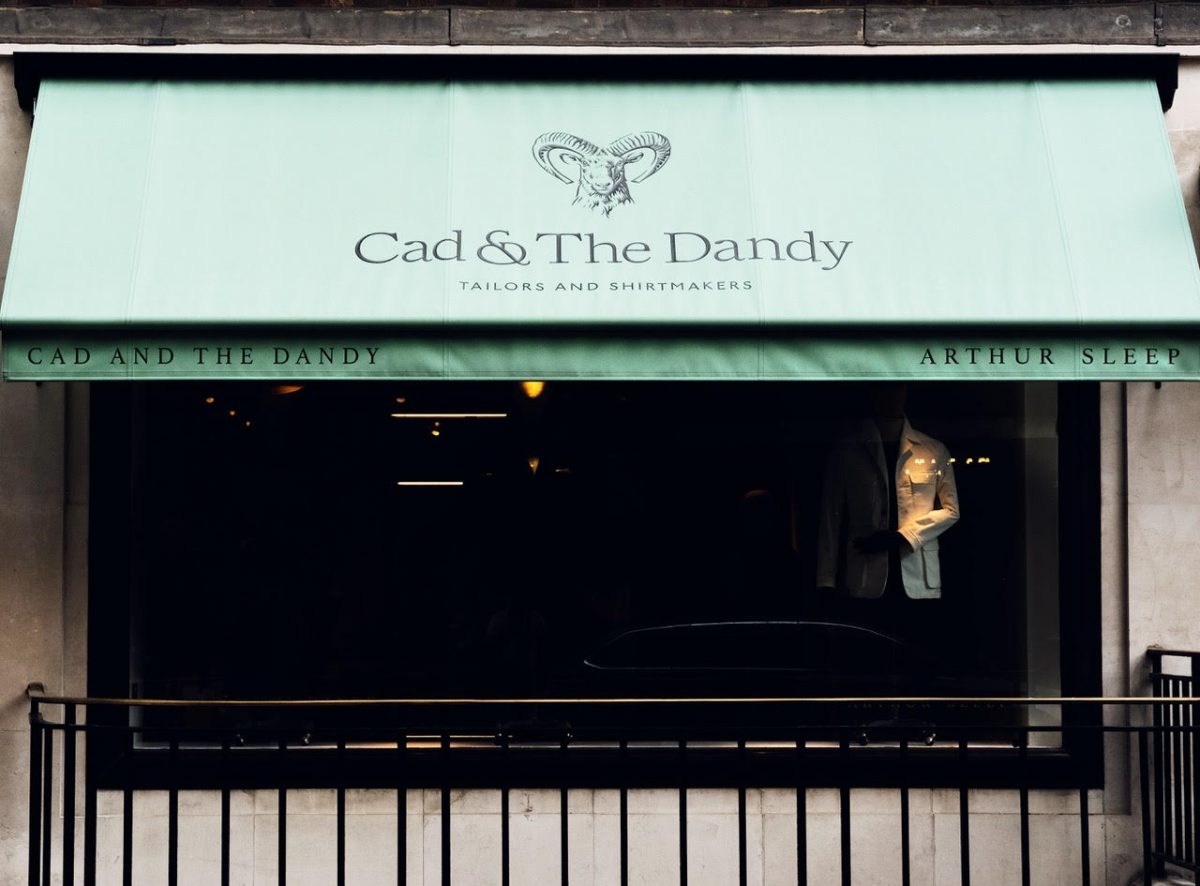
 “It’s such an exciting project and it’s good for Savile Row to have a shop that’s busy and buzzy,” says James. “A shop that absolutely has its roots in tailoring but is not really competing with anyone else because it is offering a completely different thing. It’s a unique shop for the street and hopefully one that will attract the customers of the future, offering them what might be their first foray into the world of Savile Row. Obviously, we hope they buy their suits from us but the street wins if they go on to buy bespoke suits from anyone else. That’s got to be the thing – the continuation of Savile Row. No one tailor on it is bigger that the street, the street is bigger than all of us.”
“It’s such an exciting project and it’s good for Savile Row to have a shop that’s busy and buzzy,” says James. “A shop that absolutely has its roots in tailoring but is not really competing with anyone else because it is offering a completely different thing. It’s a unique shop for the street and hopefully one that will attract the customers of the future, offering them what might be their first foray into the world of Savile Row. Obviously, we hope they buy their suits from us but the street wins if they go on to buy bespoke suits from anyone else. That’s got to be the thing – the continuation of Savile Row. No one tailor on it is bigger that the street, the street is bigger than all of us.” The new shop will have a wide selection of knitwear, lots of separates, safari jackets, worker jackets, the casual jackets you’d go to watch a game of rugby in and also core work suits, wedding suits and dinner suits – even cashmere baseball caps. “If you are not wearing a suit every day, you actually need more clothes,” says James. “If you wear the same casual jacket every day, people are going to notice. But it you wore a blue suit every day, no-one’s going to say ‘It’s that blue suit again!’…. but if you wore the same checked jacket, someone will say: ‘Hey mate, time for a change.’ The reduction in the working uniform means you’ll need to have more clothes and you’ll need to give it more thought.”
The new shop will have a wide selection of knitwear, lots of separates, safari jackets, worker jackets, the casual jackets you’d go to watch a game of rugby in and also core work suits, wedding suits and dinner suits – even cashmere baseball caps. “If you are not wearing a suit every day, you actually need more clothes,” says James. “If you wear the same casual jacket every day, people are going to notice. But it you wore a blue suit every day, no-one’s going to say ‘It’s that blue suit again!’…. but if you wore the same checked jacket, someone will say: ‘Hey mate, time for a change.’ The reduction in the working uniform means you’ll need to have more clothes and you’ll need to give it more thought.”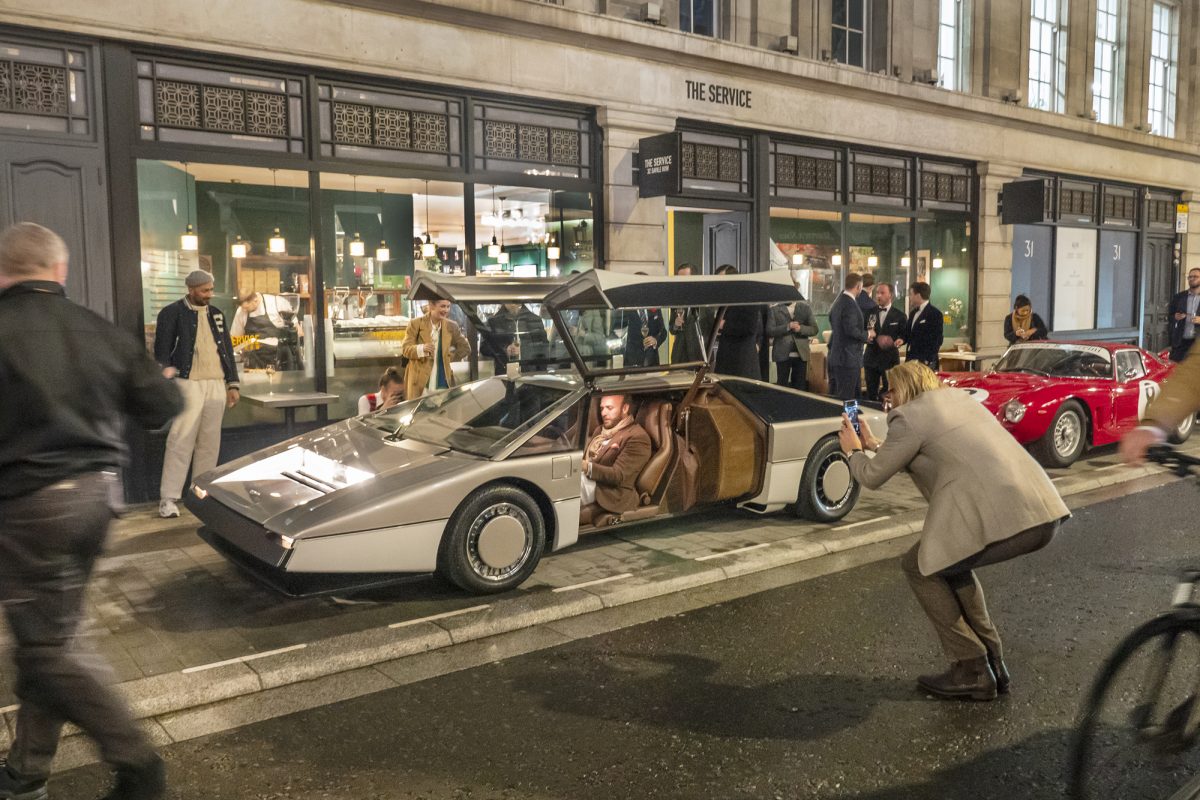
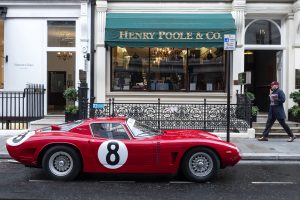 This exhibition is really a concentration on all the varied crafts which combine to create a harmonic whole, each component playing its carefully considered and executed part. This show asks the viewer to consider just how many diverse talents are required in the pursuit of the single entity be it a garment or a component. And then of course, the years of training that have gone into this. It also highlights the converging and divergent marques of each tailor who can write very singular and yet ultimately linked autobiographies. For each tailor is unique but united by the single entity of Savile Row itself. The phrase ‘history of tradition’ is not out of place on this internationally renowned street.
This exhibition is really a concentration on all the varied crafts which combine to create a harmonic whole, each component playing its carefully considered and executed part. This show asks the viewer to consider just how many diverse talents are required in the pursuit of the single entity be it a garment or a component. And then of course, the years of training that have gone into this. It also highlights the converging and divergent marques of each tailor who can write very singular and yet ultimately linked autobiographies. For each tailor is unique but united by the single entity of Savile Row itself. The phrase ‘history of tradition’ is not out of place on this internationally renowned street.